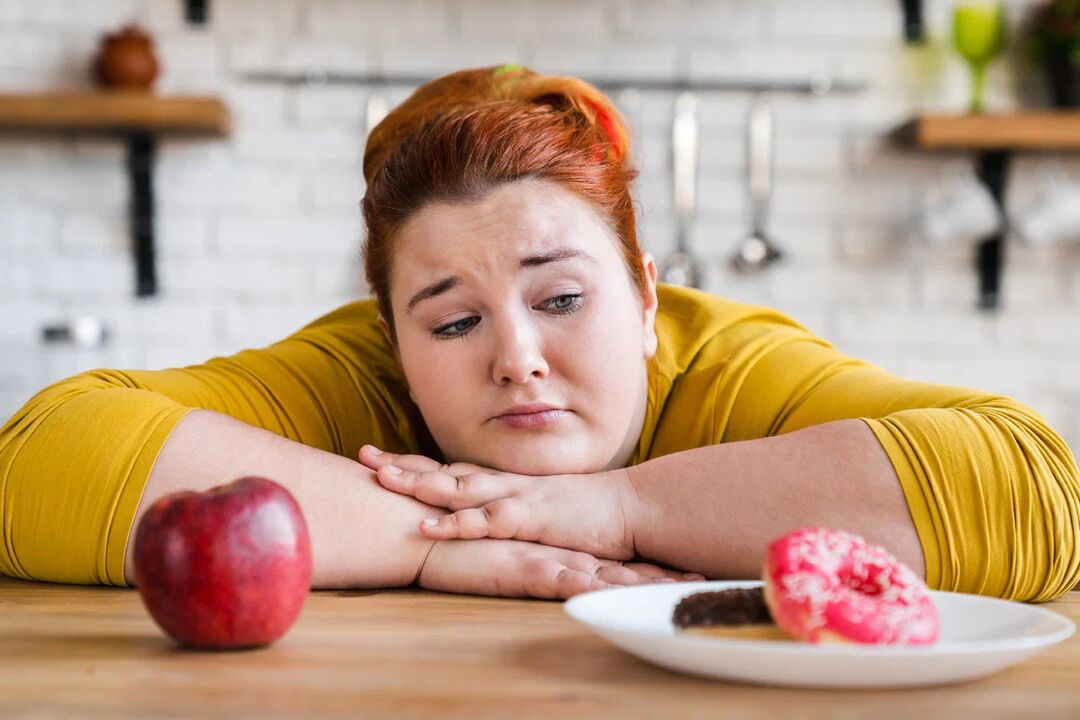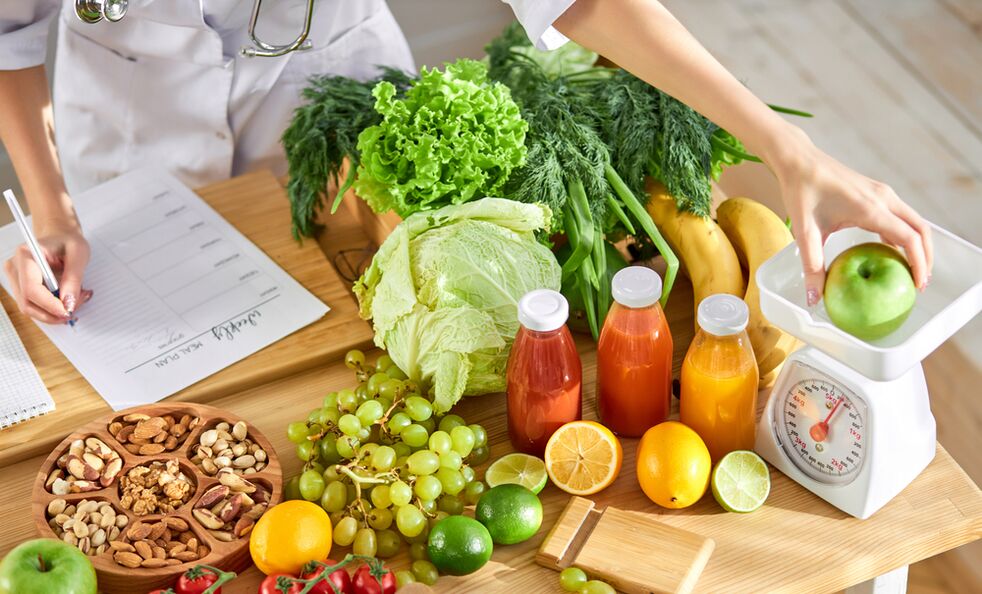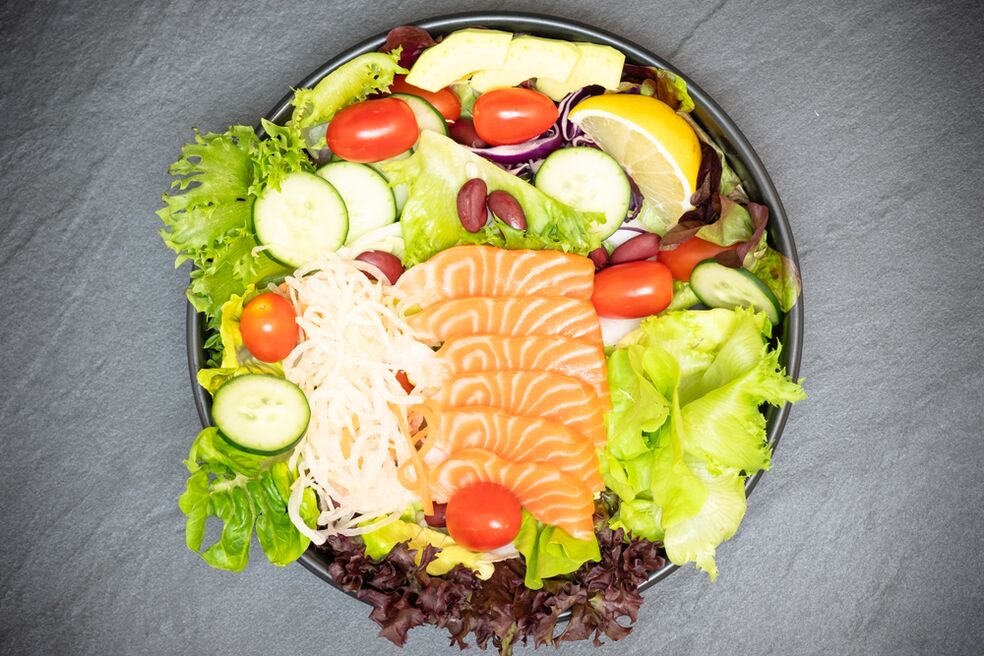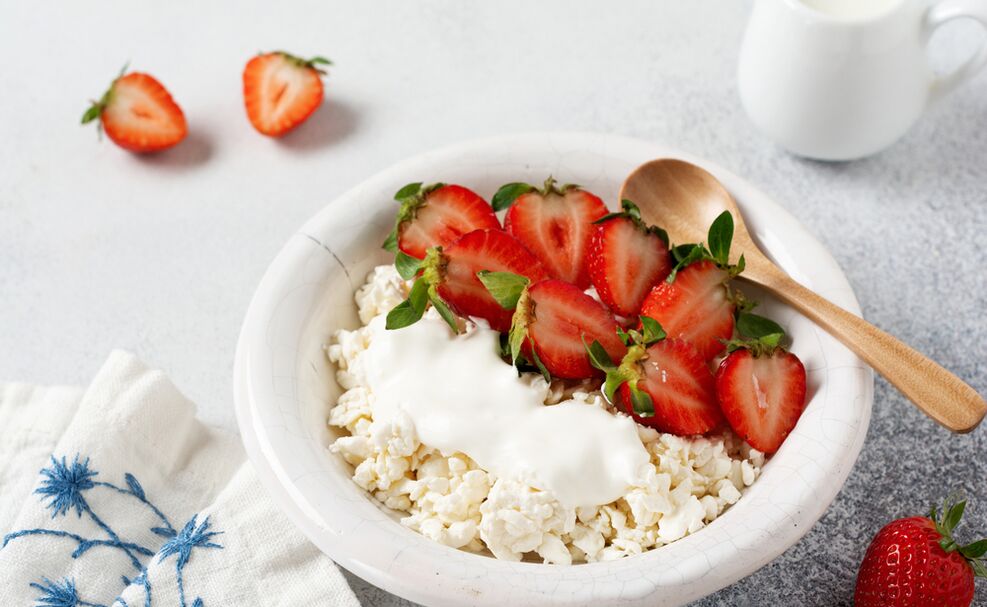
Does proper nutrition help with weight loss?
- What to eat?
- when sometimes,
- what is the amount?
- No harmful substances enter the body. For example, fried patties and hamburgers.
- Keep food intake small and at short intervals. As a result, when a person is full, the body does not feel the same stress as when it is hungry.
- Taking food compatibility and circadian rhythm into account ensures optimal digestion and maximum benefit from your diet.
- Actions are durable and there are no failures or rollbacks. The weight loss process is smooth and very physiological.
- Healthy Food,
- As per required quantity,
- at the right time.
How much weight can you lose with proper nutrition?
- Unnecessary weight disappears completely,
- Improved health,
- People become more active and active.
Therefore, people who have tasted the beauty of proper nutrition rarely give up later. The impact of proper and improper nutrition on health and figure is very obvious.
Basic principles of proper nutrition and weight loss
- With a strict diet, amazing results can be achieved quickly. However, the kilograms lost are usually quickly regained afterwards. While PP becomes the norm in life, the excess weight disappears more smoothly, but then no longer forms.
- Proper eating allows you to eat delicious and varied meals at home without causing depression or anxiety. The menu is simple and easy to understand, starting with simple products and requiring no special charges. There are new delicious dishes every day that are never boring or dull to eat. There are no strict standards, which is why PN is often called a "free diet. "
- Daily and weekly menus are prepared taking into account the presence of essential fats, proteins and carbohydrates as well as vitamins and minerals. There is no room for physical exhaustion or lack of strength.
- Proper nutrition means eating regularly. There should be three main meals and two additional meals. About 25% of the daily diet should be breakfast, 40% should be lunch, 15% should be dinner, and 10% should be two snacks. In this mode, a person does not have a strong feeling of hunger. He seems to be full all the time, but eats less and digests it more efficiently.
What does proper nutrition mean?
- Eliminate unhealthy cooking choices;
- Make meal frequency as physiological as possible,
- Consider the compatibility of foods on a plate or meal.

What does proper nutrition include?
- vegetable,
- fruit,
- cereals
- Vegetables (carrots, cabbage, onions, garlic, potatoes, beets, radishes, pumpkins, cucumbers, tomatoes, zucchini, peas, chickpeas, corn, etc. );
- Cereals (buckwheat, oats, barley, rye, wheat, quinoa, rice, etc. );
- Fruit (apple, pear, apricot, quince, orange, banana, pomegranate, grapefruit, melon, fig, kiwi, lemon, mango, peach, persimmon, etc. );
- Berries (watermelon, barberry, bilberry, grape, strawberry, cherry, blackberry, strawberry, viburnum, cranberry, gooseberry, raspberry, sea buckthorn, etc. );
- Green vegetables (scallions, dill, parsley, basil, asparagus, oregano, rhubarb, arugula, lettuce, celery, etc. ).
What foods should you avoid when eating healthily?
- any canned food,
- semi-finished and ready-made industrial dishes,
- store bought candy,
- sausage products,
- Refined products (sugar, vegetable oils),
- white bread, white rice,
- Mayonnaise, margarine,
- store bought sauce,
- sweet fermented dairy products,
- broth,
- any fast food,
- Carbonated drinks.

Where to start with proper nutrition for weight loss?
- Set your goals correctly. This will be the answer to the question of how to adapt yourself to new types of nutrition. Maybe someone’s goal is to lose a specific amount of weight, someone’s goal is to be free of a disease, someone’s goal is simply to stay sick for as long as possible and look radiant. Everything is personal. However, here you should not focus on quick weight loss, but on a systematic approach to getting yourself in the right shape.
- Set the screensavers on your phone and computer to images or photos that inspire you and reflect the essence of your dreams. For example, for girls, this could be a photo of themselves in a swimsuit before they were overweight, or just the beautiful athletic lady they wanted to be.
- Nutritionist advice is to gather information about unhealthy and healthy foods. Understand the impact the food we eat has on the body - positive or negative. Learn about healthy and unhealthy foods and dishes. The clearer you are about the nature of the process, the easier it will be for you to adapt to your new diet. Then the new rules will not seem burdensome to you, and you will understand their benefits.
- It is recommended to download certain apps on your phone. For example, we can talk about "helpers" for counting calories in food, about the proportions of protein, fat and carbohydrates in food. In addition, since PP needs to drink enough water, it is recommended to install an appropriate reminder program. Additionally, apps that remind you of your meal schedule have proven themselves.
- Start a food diary. You will write down what you ate, when and how much you ate. There you can also record the results of your new diet, create menus, create daily cooking plans and organize dishes for each day of the week.
- In addition to switching to new eating habits, set aside enough time for physical activity. Including introducing specific exercise exercises into your lifestyle. They will make your body healthier and more attractive. Also adjust your sleep schedule. You should sleep at night and stay awake during the day. Such a complex of PP, regimen and physical activity will allow you to achieve the results you want faster and more effectively.
How to develop the right nutrition plan?
The first stage
second stage
- Breakfast - 250 calories,
- First snack – 100 kcal,
- Lunch - 400 calories,
- Second snack – 100 kcal,
- Dinner – 150 kcal.

The third phase
- Breakfast - 6: 00 to 8: 00.
- First snack - 9: 00 to 12: 00.
- Lunch – 13: 00 to 15: 00.
- Second snack – 16: 00 to 17: 00.
- Dinner – 18: 00 to 20: 00.
- The interval between meals should not exceed 3 hours,
- There is no need to eat too much at night.
Stage 4
- Protein – 1. 5-2 g,
- Fat - 0. 5g,
- Carbohydrates - 2. 5-3 grams.
The fifth stage

Additional advice from a nutritionist
- Think of the transition to proper nutrition as an exciting food journey that will only bring you positive emotions. If this is the approach, then the attitude towards the process will no longer be "need", but "I want". Let’s cook and eat together!
- Drink more water. It accelerates the metabolic process and removes harmful substances from the body faster. Water also quenches thirst, which many people today consider to be a desire to eat. Here's a good rule: If you want to eat, drink a glass of water, and if the craving doesn't go away after 20 minutes, eat. But most of the time you don't want to eat at the "wrong" time, you just want to drink.
- Don't skip meals. Otherwise, it will cause greater hunger. The body will go into stress mode and start accumulating fat deposits again "in case of a rainy day".
- Discover a new world of interesting products and dishes. Use more spices and herbs. They will make food more delicious and healthier. Diets should generally be as varied and interesting as possible.
- Replace unhealthy sugar with honey, dried fruit instead of candy, and brown rice instead of white rice. When baking, use whole wheat flour, pasta made with whole wheat flour only, or spelt flour, and instead of using instant yeast, make your own sourdough.
- It is recommended to take the last meal 3-4 hours before going to bed. If you want to eat, it's best to just drink some water. Next, if that doesn't help, then you can fix the problem with a cup of your favorite herbal tea. Alternatively, eat lighter foods such as vegetables and fruits. And gradually move the dosing time away from sleep.
- Choose your products wisely. Give priority to natural foods. If you still decide to buy something with "ingredients" written on it, research it carefully. Remember, the shorter the time, the better for your body. Prioritize simple vegetables, fruits and grains. You can never go wrong with this one.
- Remember, fatty, fried, high-calorie foods are no longer good for you. Stew, boil, bake, and steam dishes, but don't fry them. During the frying process, firstly, a large amount of high-calorie vegetable oil or animal oil is used, and secondly, it is often converted into harmful carcinogens, leading to cancer.
- Chew food thoroughly. While eating, do not watch TV or use gadgets. Enjoy your meal. Then you'll eat less and feel more happy.
A week's menu for proper nutrition
- The diet should be healthy but delicious and the dishes should be varied. In this case, we also focus on their budget options. So that as many people as possible can use them.
- Since the body needs energy, vitamins and minerals in the morning, green salads, cereals, cottage cheese and/or fruits are a good choice.
- At lunchtime, the digestive system is primed to handle large amounts of food. Here you can combine meat dishes with cereal and vegetable side dishes, soups and green salads.
- Ultimately, fish, vegetable stews, and fermented dairy products are all good choices when the digestive process slows down.
- Green salads, nuts, fruit, sandwiches made with whole wheat bread and healthy "add-ons" are great options for snacking. At the same time, snacks are only slightly less caloric than breakfast and dinner. They can be considered a complete meal.

Now the menu itself
- Breakfast - buckwheat with vegetables, green tea with lemon.
- The first snack was an apple and a pear.
- Lunch - vinaigrette, turkey and vegetable soup, unsweetened berry preserves.
- The second snack is a sandwich made of whole wheat bread with low-fat cheese slices and herbal tea.
- Dinner - rice with vegetables and cod, cabbage, cucumber and tomato salad, rosehip soup.
- Breakfast - wheat porridge, a piece of cheese, green tea.
- The first snack was banana and kiwi.
- Lunch - mushroom soup, rabbit stew with vegetables, unsweetened berry juice.
- The second snack was spicy carrot salad, whole wheat bread, and herbal tea.
- Dinner - Barracuda with vegetables, rose hips and apple preserves.
- Breakfast - cheese with berries (strawberries, raspberries), green tea.
- The first snack was a banana and a pear.
- Lunch - pureed pea soup, fresh cabbage and carrot salad.
- Second snack - curd cheese, honey tea.
- Dinner - cod stewed with vegetables, lemon green tea.
- Breakfast - banana oatmeal, herbal tea.
- The first snack was an apple and an orange.
- Lunch - raw carrot, beet and apple salad, chicken breast with stewed vegetables, green tea.
- The second snack is a sandwich made with whole wheat bread and cheese.
- Dinner - cheesecake in the oven with sour cream, rosehip soup.
- Breakfast – Omelet, cabbage and bell pepper salad.
- The first snack is kiwi and apple.
- Lunch - pink salmon soup, cabbage and carrot salad, green tea.
- The second snack was cottage cheese and banana.
- Dinner - chicken and vegetable casserole, fruit tea.
- Breakfast - barley porridge with vegetables, herbal tea with lemon.
- The first snack was carrot salad with raisins.
- Lunch - cucumber tomato salad, turkey with bulgur wheat and vegetables.
- The second snack is low-fat yogurt with no artificial additives.
- Dinner - Nava with greens, beet salad, garlic and prunes.
- Breakfast - scrambled eggs with vegetables, whole wheat bread, green tea.
- The first snack was a pear and an orange.
- Lunch - Caesar salad, borscht, fruit tea.
- The second snack is a sandwich made of whole wheat bread with cheese and herbs.
- Dinner - brown rice with vegetables and carp.
Healthy Nutrition Series Recipes
Raw carrot, beet and apple salad
- Carrots - half medium root vegetable,
- Apple - half a medium-sized fruit,
- Beets - half of a medium root vegetable,
- Greens – any vegetable of your choice, mint works great here too,
- Apple cider vinegar or lemon juice - 1 tablespoon,
- Olive oil – 1 tablespoon,
- Salt, pepper - to taste.
- Peel the carrots and beets and grate them together with the apples on a coarse grater.
- Chop the vegetables and mix with the rest of the ingredients.
- Add apple cider vinegar or lemon juice, olive oil, salt and pepper.
Rabbit Stew with Vegetables
- Rabbit – 0. 5 kg,
- Carrots – 0. 5 kg,
- Onions – 0. 5 kg,
- Zucchini – 0. 2 kg,
- Bell pepper – 0. 2 kg,
- Tomato – 0. 3 kg,
- Water – 300 ml,
- Black pepper or any favorite spice, salt to taste.
- Cut rabbit meat into small pieces. Add a small amount of water and cook for about 20 minutes.
- While the meat is simmering, prepare the vegetables. Peel the carrots and grate them with a coarse grater, peel the onions and cut them into small cubes. We also cut the zucchini, bell peppers, and tomatoes into small cubes.
- Add the vegetables to the rabbit, cover and cook for another 30 minutes. Add spices. Before serving, sprinkle with herbs.






























